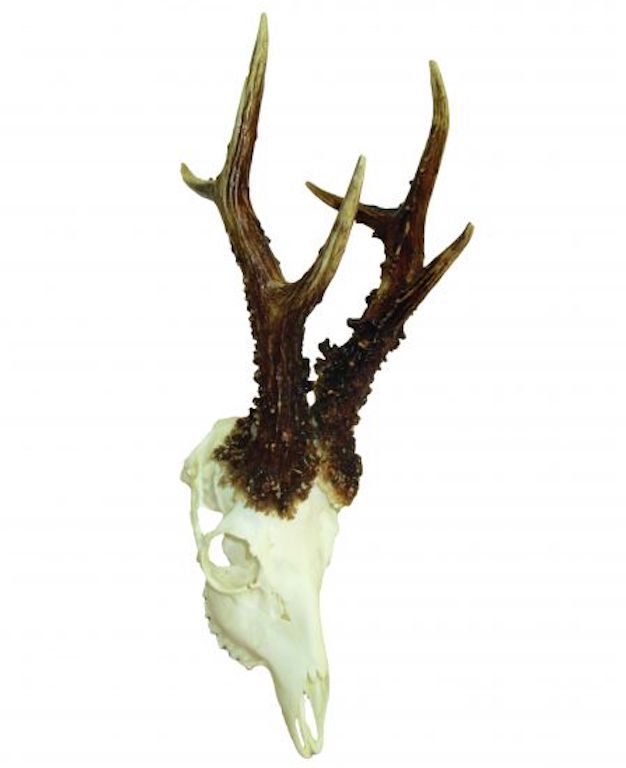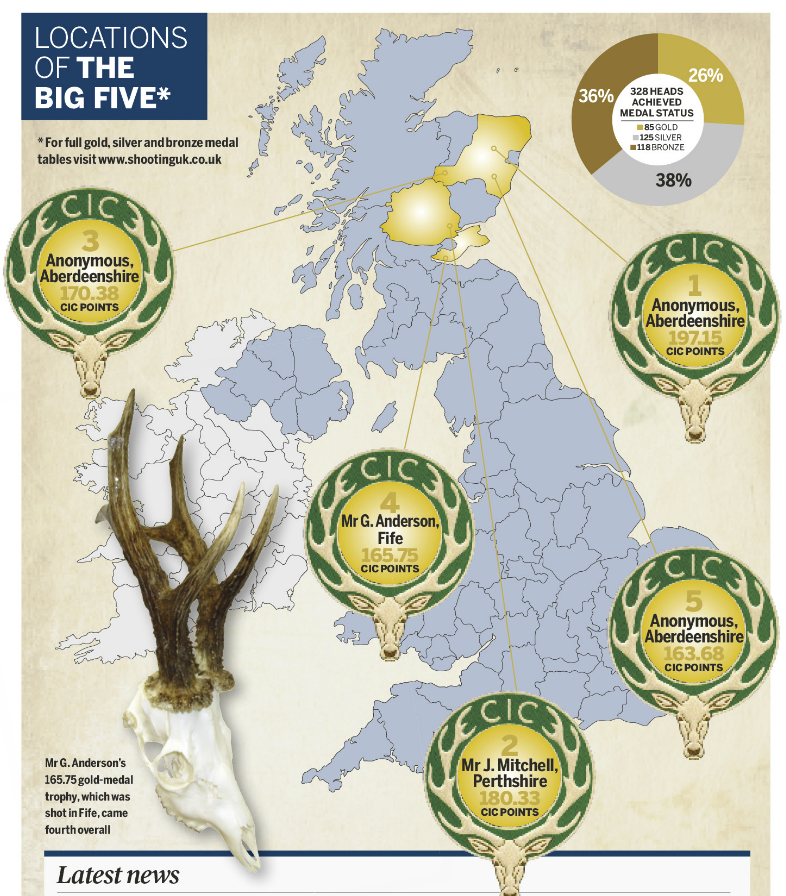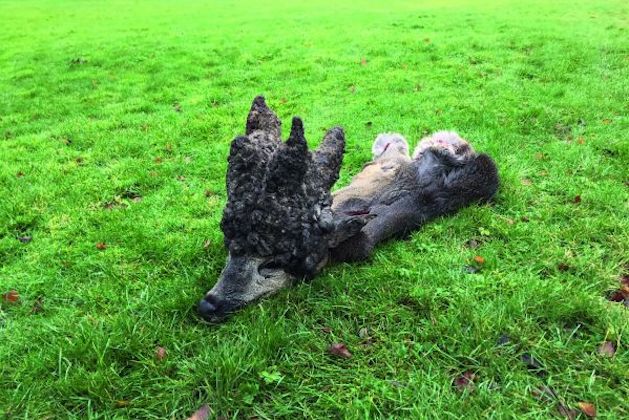Official trophy measuring service now offered to National Gamekeepers’ Organisation members
The International Council for Game and Wildlife Conservation) CIC is the only organisation authorised in the UK to offer a…
Win CENS ProFlex DX5 earplugs worth £1,149 – enter here

More than half a century ago, when Shooting Times started publishing annual reviews, if you stalked a roe north or south of the border that was felt to have made the grade, you would see your name on the very small list of bucks from across the UK that had been scored. Its picture would probably have been included, too. Things have changed, yet two factors remain constant. First, the universal popularity of roe has kept them in their pre-eminent position as a quarry species across Europe. Secondly, the numbers of them hunted in Scotland achieving medal standard under the CIC system has increased year on year.
Last year was no exception. Out of a total of 400 trophies evaluated, 328 achieved medals over the three available categories — representing a significant increase over 2017. Of these 85 were gold, 125 silver and 118 bronze. While the remainder failed to achieve medals, some came agonisingly close, with one from Jon McNeish missing out by 0.7 of a point.

The 2018 list leader in terms of overall points, with a score of 197.15, comes from Aberdeenshire. It belongs to a hunter who has chosen to remain anonymous. But looking beyond that, there were some memorable events. Chief among these was the experience of Jimmy Olsson, a regular visitor from Sweden. Jimmy, who is also a qualified CIC measurer, grassed three gold-medal trophies in less than 24 hours. Having shot them, he took his trophies home.
After the required drying-out period of 30 days, they were exported back to Scotland to be evaluated. They were then reunited with their owner at an international CIC training event in Somerset. These well-travelled trophies are a positive, though unusual, reflection on what can be achieved through a structured deer management programme, the right timing and an experienced Shot.
It was a significant achievement for Jimmy, the estate and particularly the guide, a full-time estate employee, who took him hunting.
From the 2018 list, three trophies exceeded 170 CIC points, with a further nine scoring in excess of 150. This is considered unofficially to be the benchmark for an international-class trophy. In terms of timing, it is often the opening days or weeks of the season in which most of the big bucks are taken, but if anything 2018 reflected a move away from this. There was a better spread across the tables, with more animals accounted for in late spring through early summer.
There were some exceptionally heavy heads brought in, leading to expectations of high scores — sometimes not achieved due to poor volume scores. Equally there were some very light heads that looked as if they should go gold but turned out to be bronze. Steve Cooksley had a good example; it looked exceptional, a dead cert for a gold medal, but due to its weight it didn’t get there.
Using a chemically triggered moisture measuring device, which the CIC now advocates, proved telling on some trophies, which clearly needed longer to dry out. The dipping tank at the Scottish Game Fair at Scone Palace went a fetching shade of purple when one — a very good gold-medal trophy — lost most of its colour as potassium permanganate dissolved in the water when the volume was being taken. It provided much mirth, a source of interest to passing children and some adults, and an unabashed admission from its anonymous owner.
With another mild winter — at least until the Beast from the East pitched up — our roe fared quite well. Frostbite, which often presents as a swelling towards the tip of a beam or a tine, was perhaps a little more common than in some years. It showed on youngish animals that were still in the soft growing phase when the cold spell kicked in. There were as always a number of porous heads, usually the result of an animal having had unrestricted access to a high-protein or mineral diet.
Additionally there were a lot of well-coloured heads presented, a reflection on later-season shooting, which can improve scores by as much as two points. On occasion this pushes them into a higher category.
Though the quality and length of the 2017 rut has been the subject of a lot of debate, with the arrival of the 2018 kid crop, it became clear that it had taken place.
Talking to visiting hunters, it seems to me that their expectations are usually fulfilled where those of resident stalkers are not. Could this be in part due to availability and time constraints? The visitors have the whole day, they are on holiday and able to devote time to exploiting the opportunities of the rut. The residents usually only have their leisure hours to contribute, other than those who are professionals or who have chosen to take holidays to coincide with the likely dates of roe activity.
It is still the big-hitting east coast counties of Aberdeenshire, Perthshire and Fife that remain to the fore in frequently producing very high-scoring bucks. As roe stalking has grown in popularity, a significant number of stalkers new to the sport have appeared on the gold and silver medal lists. Their arrival is welcomed; as with all fieldsports we need new entrants to prosper and for our deer species to remain valued.
In 2018 Scotland continued to produce strong roe trophies and contributed a significant percentage of roe to the Budapest-based CIC Trophy Evaluation Database. The country again punched well above its weight when compared with a number of its more illustrious European neighbours. It is to be hoped that 2019 develops in the same vein. These quality trophies from across the country reflect the strength and health of our roe populations, and our ability as managers and stalkers to treat those deer with the respect they deserve.
The International Council for Game and Wildlife Conservation) CIC is the only organisation authorised in the UK to offer a…
Looking to the coming season, the Scottish CIC team has been strengthened by the appointment of Alastair Troup as a senior international trophy judge — who now takes his place on the International Trophy Evaluation Board — and of two new judges, Colin Johnston in Fife and Laurie Littlejohn in South Lanarkshire. Both Colin and Laurie completed their training at CIC headquarters in Budapest in December 2018 alongside some German and Swedish colleagues.
We will be measuring at the Deerstalking Fair in March as well as the Scottish Game Fair in July and the Highland Field Sports Fair in August. This year we hope to secure formal CIC event status for some of these fairs and, as always, look forward to meeting up with old and new friends at these venues. Thank you to all who submitted their trophies to us in 2018 and good hunting to all for the coming season.

In Sutherland, a large perruque was culled on welfare grounds in the opening months of the year
The interest in “odd” animals never seems to lessen and a number of perruque trophies were accounted for over the year. These came from a variety of locations including Sutherland — where a large animal was culled on welfare grounds in the opening months of the year — down to the Scottish Borders, where animals were reported on two occasions.
A large female perruque was shown at the Scottish Game Fair, making it the second very large doe
we have seen.
The far north of Scotland has, in the past decade, produced some unusual animals — both male and female perruques, as well
as multi-hoofed deer — along with more than its fair share
of high-quality trophies.
Get the latest news delivered direct to your door
Discover the ultimate companion for field sports enthusiasts with Shooting Times & Country Magazine, the UK’s leading weekly publication that has been at the forefront of shooting culture since 1882. Subscribers gain access to expert tips, comprehensive gear reviews, seasonal advice and a vibrant community of like-minded shooters.
Save on shop price when you subscribe with weekly issues featuring in-depth articles on gundog training, exclusive member offers and access to the digital back issue library. A Shooting Times & Country subscription is more than a magazine, don’t just read about the countryside; immerse yourself in its most authoritative and engaging publication.

